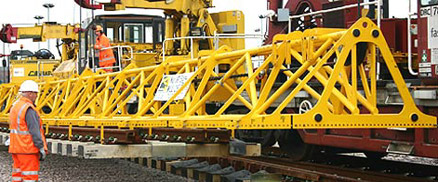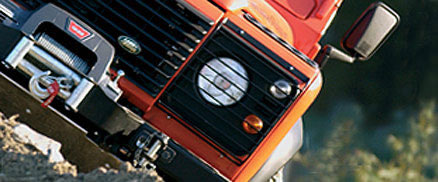December 31st, 2010
Material handling needs differ from application to application. Ingersoll Rand offers numerous hoist types with a range of options that can be matched to meet your specific requirements. When the time comes to select the appropriate hoist for your needs, consider the following criteria:
Maximum load
Consider the maximum load the hoist will need to accommodate. Ingersoll Rand hoists have weight ratings from 275 lb to 6 tons. Consider hoist speed. The speed requirement of a hoist is dependent on the corresponding cycle time of the task to be performed – lift, transport, lower, return, start again.
Installation requirements
Ingersoll Rand hoists, whether hook or trolley, can be mounted on several beam configurations. Compact for low headroom requirements, these hoists can be mounted in areas where others can’t.
Air supply
To ensure maximum operating performance, Ingersoll Rand rotary-vane air hoists (except Palair Series) require air supplies that continually provide clean, lubricated air at sufficient pressure and volume. Ingersoll Rand hoists require 90 psig at 65 to 70 scfm.
Control method
Our rotary-vane air hoists control lift and descent by admitting proportional amounts of air to the motor through a valve. Ingersoll Rand offers two control systems:
1. Pendent control system — a 3-hose pilot pressure / bleed system opens and throttles the valve.
2. Pull-chain system — operator-controlled pull chains attached to arm open and close the valve.
Posted in Arbil Lifting Gear |
December 31st, 2010
The safe use of beam clamps will largely be governed by the requirements for the lifting appliance with which it is to be used but should take the following matters into account:
- Do not use defective beam clamps, lifting appliances or accessories.
- Ensure the structure from which the clamp is to be suspended is undamaged and is adequate for the full load that will be imposed. If any doubt exists consult a Competent Person to confirm suitability of the clamp.
- Ensure the clamp is suitable for the application, correct size and profile for the beam and seats correctly and safely. It must not cause localised overloading.
- Ensure the lifting appliance is compatible with the clamp and that hooks or other attachments fit freely into the eye, shackle etc of the clamp.
- The clamp must be positioned directly over the centre of gravity of the load and the load must not be allowed to swing or impose an oblique loading.
- If two clamps are to be used in tandem the use of ancillary equipment may also be necessary, eg spreader beam. Care must be taken to ensure no one clamp takes more than its SWL.
Posted in Arbil Rail |
December 30th, 2010
Wheel bearings can fail if not maintained or looked after properly. Here are some tips to prevent this from happening:
- Clean bearings properly. Use clean solvent and brushes and dry thoroughly with clean air.
- Never spin dry bearings; this causes scratching of the polished surface and may result in premature failure.
- Do not pack the bearing unless it is perfectly dry.
- Good practice calls for a thorough inspection after cleaning and before reinstallation. Bearings in 4×4’s are often hammered or pulled without respect for such precision made assemblies. Re-assembly of a damaged bearing results in short component life.
- Pack the bearing immediately following cleaning, drying and inspection.
- Do not use an excessive amount of grease – be sure it is worked into every bearing space, but do not fill the hub with grease.
- Keep bearings clean, work on a clean bench and do not handle bearings with dirty or moist hands.
- When re-assembling check the bearing for proper seating.
- Check adjustments carefully. Most vehicle manufacturers nominate a torsion wrench setting for bearing assemblies. Use a torque wrench and do not exceed the manufacturer’s recommendation.
- Check brake shoe clearance, the dragging tip of a brake shoe or pad can create very high wheel temperatures in a short run.
- Keep grease containers completely covered when not in use to avoid contamination. (Replace the lid immediately sufficient grease has been removed from the container).
- Do not mix different types of grease. Under no circumstances must lithium based multi-purpose grease be mixed with soda base wheel bearing grease or an adverse chemical reaction will occur.
- Carefully avoid contact of the packed bearing with dirt, dust, water or dirty hands.
- Use the correct grade of grease for the job. Do not at any time use chassis grease. If the vehicle is used in very arduous service or under unusual conditions of load and speed, check with the manufacturer for correct grease recommendation.
Posted in Arbil 4x4 |


